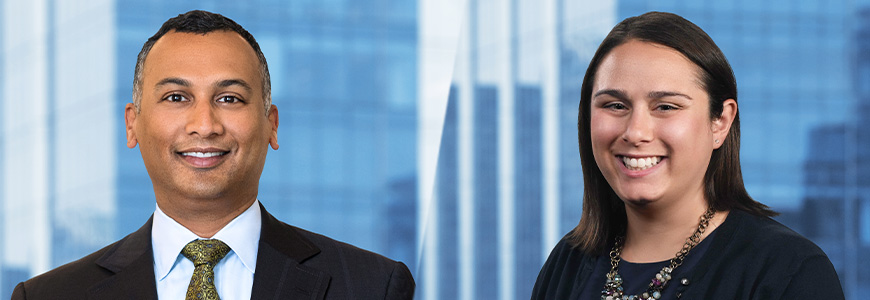For many business owners, selling a company is one of the biggest decisions they will ever make, with ramifications that could extend well beyond their own lifetimes. That is especially true for a family- or founder-owned business, where the business is likely a large part of the owner's life.
That’s why owner-operators should prepare themselves for life after a transaction. William Blair’s Christopher Brathwaite, partner, director of pre-liquidity planning, and Emily Guglielmo, wealth strategist, explore four questions owners should ask themselves—and consider with their William Blair wealth advisors—to position themselves for a successful liquidity event.

- How will the transition change my day-to-day life?
- Owner-operators know a transaction will change their daily routines, but the change can take a variety of forms. If the transaction involves a passive investor or partnering with a family office, their daily activities may remain largely unchanged. However, a strategic acquirer or financial investor might bring in new leadership on day one. Most terms of sale are somewhere in between. For example, the owner may stay for a six-month earnout retention period to help transition the business.
Regardless of the timing, there are emotional considerations for exiting owner-operators. After years of running a company, some struggle to fill their days. Others have difficulty relinquishing control when they hear about organizational changes, such as a new company name or staff changes, or may feel guilty about “abandoning” employees. There isn’t a standard approach for working through these issues, but business owners should realize that these emotions are common, and your William Blair wealth advisor has the resources to manage them. Additionally, other unforeseen issues can arise after a sale, including an unintentional, elevated profile. Once public, a liquidity event can garner the attention of charitable fundraisers, service providers, and even extended family members. This heightened visibility can mean reviewing personal liability exposure and risks, such as asset protection, cybersecurity, and even personal security, may be prudent. Owner-operators should consider a risk audit to evaluate these issues before the close of the transaction. - How will my own wealth be affected?
- After years of taking a salary from their company, many owner-operators may struggle with the transition from taking income from their business to recreating a paycheck from a liquid portfolio. Developing a financial plan that considers dividend and interest income, as well as tax-efficient gain realization, can be an informative exercise. Incorporating your financial goals is essential for understanding the new financial horizon the transaction has reshaped.
Stress-testing the long-term resilience of the liquid portfolio is also important. Many owners may benefit from building a financial model or working with their wealth advisor to do so for their personal planning goals. Incorporating their tolerance for volatility, strategic allocation preferences, taxes, and adjusting spending for inflation are all elements to understand how much capital needs to be set aside for sustainable financial security. Identifying a maintainable spending level while incorporating market volatility and other cash flow needs is crucial to uncover excess capital that can be earmarked for different goals, including generational wealth transfer and charitable endeavors. - What is my ideal vision for activating the wealth I am about to acquire?
- “Activating” is the key word here, as it connotes being purposeful with newfound wealth and designating it for specific purposes. It’s smart to divide capital into three to four buckets: lifestyle, generational, philanthropic, and, in some cases, new ventures. After stress-testing to determine what’s needed to maintain financial independence, wealth advisors can help an individual assess how much remains.
Owner-operators are often pleasantly surprised when they learn just how far their newfound wealth can go. Planning strategically about what to do next comes down to their priorities and preferences around making an impact generationally, philanthropically, or both. Depending on their unique goals and aspirations, founders may consider utilizing wealth transfer vehicles, such as irrevocable trusts, to provide for future generations or serve as a financial safety net for children and grandchildren. There may also be an opportunity to pre-fund future charitable giving while also capturing significant income tax benefits in the year of a transaction. Finally, many founders may want to allocate capital for seeding a new business venture or investing directly in other private or young companies. - Do I have any charitable intentions?
- Wealth advisors often ask a simple question: Can the owner-operator see themselves becoming more philanthropically engaged after the transaction, even if they hadn’t prioritized it previously? In addition to the infusion of new wealth, it’s an important question because of timing—charitable deductions work best if they’re made in the same tax year as the liquidity event. For instance, funding a donor-advised fund (DAF) can be a key part of a larger plan to significantly lower an individual’s tax bill, as shown in the chart below. Other charitable vehicles include direct gifts, specifically stock, cash, or other assets to a charity, charitable remainder trusts, and charitable lead trusts.
A focus on philanthropy can provide other unexpected benefits. It’s common for family members who may not have been previously involved in the business to rally around using transaction proceeds toward specific philanthropic goals. When that happens, focusing on philanthropy can become a way to engage the next generation in the family’s wealth and legacy for years to come.
Personal preparation is just part of the equation regarding a liquidity event; readying the company and preparing for the transaction process is also essential. We believe the above questions will put owner-operators on solid footing as they navigate the post-transaction path. For additional questions, please contact Christopher Brathwaite, Emily Guglielmo, or your William Blair wealth advisor.




